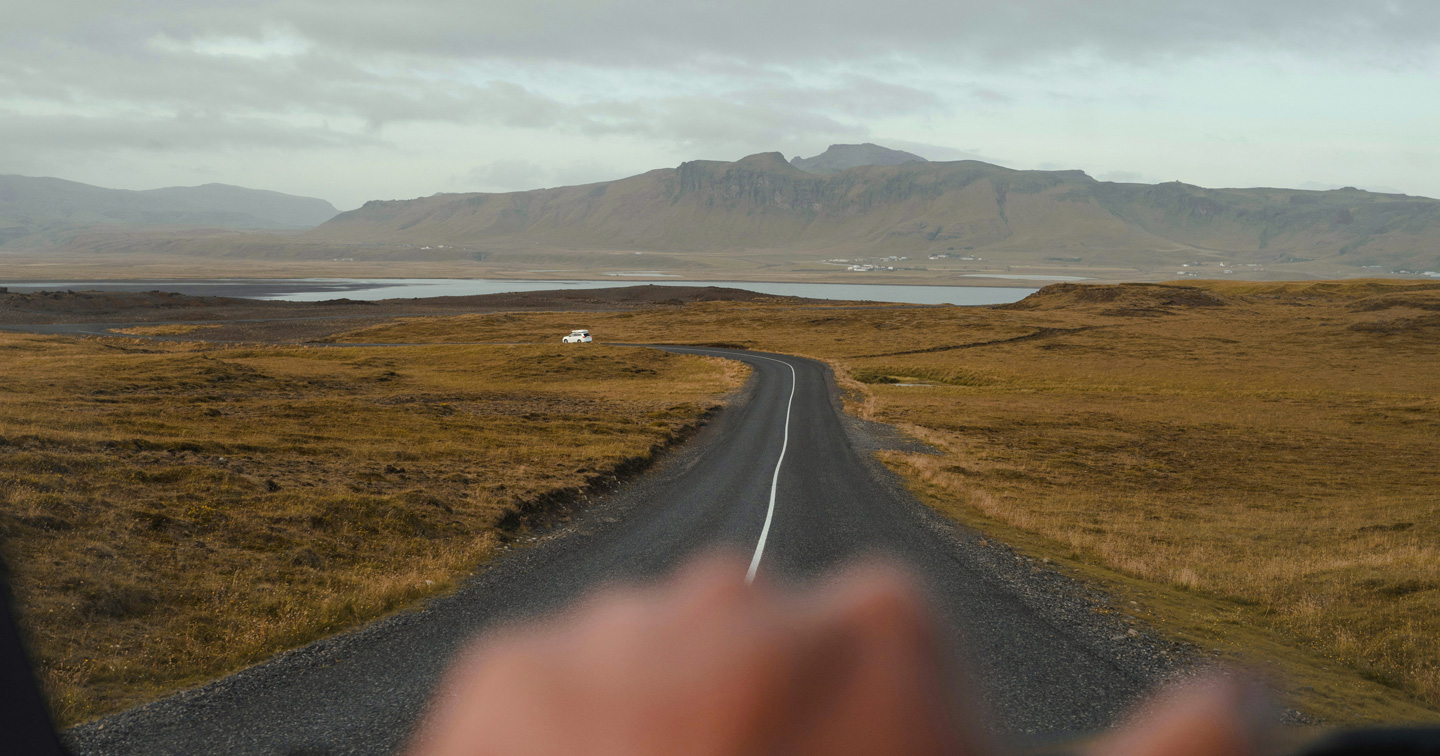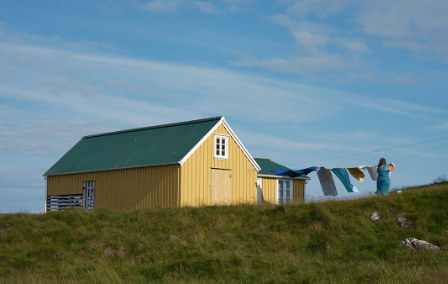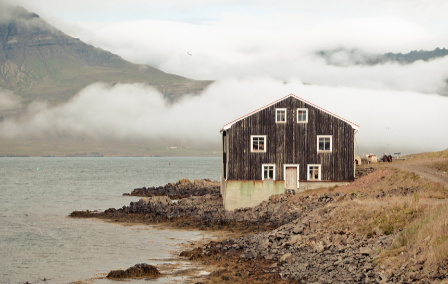Published 12th Jul. 2023
Reading time
Norway might be the first Nordic country that comes to mind when you think of fjords, but there are more than 100 fjords in Iceland too. Many were formed during the last Ice Age as glaciers moved towards the sea, carving deep and narrow inlets into the landscape. Today, the fjords remain a striking feature of the coastline; spectacular, serene and surrounded by mountain peaks, waterfalls and walking trails. From fjords near Reykjavik to those in remote and rarely visited regions, these natural wonders are waiting to be discovered. To help you plan your trip in Iceland, here are five of our favourite fjords in this bucket-list-topping, northern wonderland.
Most trips to Iceland begin in the capital city of Reykjavik. Even if you’re on a weekend break, you can get out and sample some distinctive Nordic scenery at one of the fjords close to the city. The Borgarfjörður region is a one-hour drive from Reykjavik and home to a fjord of the same name, which is widely regarded as the setting for many Icelandic sagas and legends. If you aren’t heading straight back to Reykjavik, stay in the nearby town of Borgarnes, which is heated by one of the biggest hot water springs in Europe, the Deildartunguhver. To take a restorative dip in the geothermal waters, visit the town swimming pool, which has a steam bath fed by the hot spring.
The name Breiðafjörður means ‘wide fjord’ in Icelandic. It’s certainly that; at an enormous 31 miles wide and 78 miles long, you could argue that it’s more of a bay than a fjord. Either way, Breiðafjörður is teeming with wildlife, making it one of the best fjords in Iceland for nature lovers. More than 50 bird species breed here, including puffins which nest on Flatey, the only inhabited island of the 3,000 in the bay. Seals are also a common sight and if you’re particularly lucky you could even spot a minke whale. For a secluded stay away from it all, there is guesthouse on Flatey that opens during the summer months, when local families arrive on the island to holiday in the colourful timber houses of their ancestors.
Another fjord not far from Reykjavik (50-minutes’ drive) is Hvalfjörður. Many people travelling north from Reykjavík bypass the fjord via the underwater tunnel that opened in 1998. However, we recommend taking a detour to drive around Hvalfjörður on route 47; an hour-long diversion you won’t regret. A contender for Iceland’s most beautiful fjord, Hvalfjörður is nestled among volcanic mountains and verdant green terrain (during the summer months), with plenty of picturesque photo opportunities to make you want to stop the car. Another highlight of the area is Glymur, a 650ft waterfall along the Botnsá river that is the second highest in Iceland. The river falls down the side of Hvalfell mountain into a steep canyon; a towering, thundering cascade worshipped by waterfall watchers. It’s worth noting that the walk from the parking area off route 47 to the waterfall viewpoint is strenuous, with uneven terrain, so you’ll need sturdy boots and walking poles to complete the three-hour hike there and back.
Located in east Iceland, the town of Seyðisfjörður is known for its Instagram-famous blue church on a rainbow-painted street. It’s also a cultural haven, with festivals and concerts celebrating local craftmanship and creativity all year round. And like many of Iceland’s most picturesque towns, Seyðisfjörður sits on the shores of a fjord with the same name; an Arctic wilderness close to the fifth-largest glacier in Iceland. To experience the fjord from the water, we recommend a kayaking tour. Taking a tour is a great way to get closer to untouched nature while staying safe (remember that the water is icy cold) and benefitting from the expertise and local knowledge of a guide. Glide through the water below snow-covered slopes and beside rolling meadows; enjoy the silence broken only by the splash of a paddle or the chatter of your fellow kayakers; and look out for the resident bird and marine life, including seals and minke whales. After all that paddling, return to land to enjoy a well-earned bite to eat at one of the town’s restaurants, which include a sushi bar where the freshest Icelandic fish is prepared by internationally-trained chefs.
A remote region that is only visited by about 10% of travellers to Iceland, the Westfjords remains off the beaten path despite the explosion of Icelandic tourism. The landscape here is wild, rugged and dramatic, with tiny fishing villages, cascading waterfalls and surprisingly tropical-looking beaches. This underexplored and isolated area also has some of the most impressive fjords in Iceland; look at the peninsula on a map and you’ll see fjord after fjord cutting into the coastline. Want to see as many as possible in one trip? Follow the Vestfjarðaleiðin or the Westfjords Way, a 590-mile circular route that zigzags around the fjords. Travelling by car is perhaps the most comfortable way to explore what many call Europe’s last great wilderness, but the route is popular with bikers too. However you choose to discover the Westfjords, it’s a place where you can truly feel that you are taking the road less travelled.

Using a wealth of experience, our team can help you venture off the well-trodden trail of the Golden Circle to areas such as the Snaefellsnes Peninsula, a microcosm of the ‘land of fire and ice’, or to the Highlands in the country’s centre for epic hiking trips. We plan every experience to suit you, whether you want to snowmobile across a glacier or taste freshly caught seafood on the deck of a fishing trawler. In a country where changeable weather conditions and volcanic activity can quickly disrupt plans, our excellent team of local guides and our helpful Concierges offer invaluable support.
ENQUIRE NOWPractical advice and inspiration for your next trip

With lingering daylight, lush landscapes and adventurous outdoor activities, a summer holiday in Iceland promises to be one for the books. At this time of year, the weather is at its warmest (10°C on average, mind you, so don’t forget your winter knits) and the light barely fades thanks to the Midnight Sun. From hiking and hot springs to whale watching and glacier tours, there's something for everyone to enjoy.
1st May 2025 - Iceland Travel Inspiration

It’s a gratifying feeling when someone asks you where you got your jumper from and you get to say, ‘my recent trip to Iceland’. Or, once presented with a slab of Omnom chocolate, you can tell your nearest and dearest that it in fact travelled all the way from ‘The Land of Fire and Ice’. For this isn’t a country of shot glasses, fridge magnets and ‘all I got was this lousy t-shirt’ t-shirts. It’s hand-harvested sea salt that’s been produced from Iceland’s geothermic energy since the 17th century, skincare from the original Blue Lagoon and gripping Viking Sagas.
3rd January 2024 - Iceland Travel Inspiration

Iceland doesn’t mess around when it comes to sustainability. With tourists outnumbering residents, the country has found ways to ensure the constant flow of footprints cause minimal damage to the environment. But responsibility doesn’t just lie with the country – visitors also have a duty to protect the world-class hot springs and national parks. Luckily, we’ve got a rundown of top tips to encourage sustainable tourism in Iceland.
22nd November 2023 - Iceland Responsible Travel

Our team of destination experts will get to know you and your unique requirements for your holiday

We work with you to build an ultra-personalised holiday itinerary with your choice of accommodation, experiences and activities

All of our holidays include little extras designed to make a big difference to your trip, from fast-tracking you through airport check-in and security to our network of local Concierges